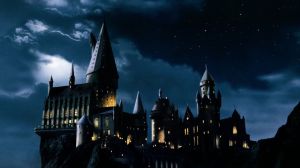The first volume of Moonshine, Image Comics‘s Depression-era supernatural mob thriller from writer Brian Azzarello and artist Eduardo Risso, is on the stands this week.
Videos by ComicBook.com

The pair have worked together numerous times before, most notably in the co-creation of 100 Bullets for DC’s Vertigo imprint, but this is the first time they’ve taken a project to Image, the quasi-official home of creator-owned comics for big-name creators.
Azzarello joined ComicBook.com to briefly chat about the series, what to expect, and why you should check it out.
You can get a copy of Moonshine Volume 1 at your local comic shop or order a digital version here.
Not to undersell Risso’s linework here, but it the colors in this book really are key to establishing a tone. How much did you guys talk about the palette of MOONSHINE?
We really didn’t talk at all other than when Eduardo told me he wanted to color the book. I was anxious to see what he would do, this being the first time he’d be coloring his own work. Turns out I had nothing to worry about, right? I think this is arguably the best work of Eduardo’s career– and there’s a lot of best work in that career of his.
The supernatural elements are obviously a big part of the pitch, but for a lot of the book the reader is in with the cast: we don’t see much but the aftermath. Was there a reason you wanted to go with that over a lot of in-your-face “monster” material?
Yeah, it’s a similar approach we took on 100 Bullets. I know that book (and this one now) has been described as hyper violent but visually most of the real violence takes place between the panels– and in the reader’s mind. It works best there, I think. You’re all sicker than we are.
There are also quite a few cases of everyday brutality in this book — not just from the crime side, either, but little things like chickens being butchered. Was there a particular feel or theme you were going for, making everyday life feel as grimy and bloody as the werewolf stuff?
We’ve become so desensitized to violence as a culture that art can (and should) be used to slow the world down; to make people stop and notice. That’s all we’re guilty of.
One thing that feels common to many of your creator-owned works: most of these people — even the darkest characters — have their own stringent moral codes. Is that an “everyone is the hero of their own story” thing, or is it more significant than that?
Yeah, I guess. I mean, if you’re not insane or psychotic you generally believe that what you’re doing– while not always good– has a good reason behind it. That’s a decidedly human subtly.
When you’re writing about this larger-than-life era, one that has been explored SO MUCH in popular culture, where do you draw the line in deciding to embrace actual reality versus the image of that reality audiences will have in their heads?
I really don’t think this era has been explored much in pop culture; at least not from the rural perspective we’re coming from. That said, it’s a horror story so it has to be grounded in reality to work. So our most important job is to establish a reality the reader can believe in. Once we do that, we have the fear invade.








